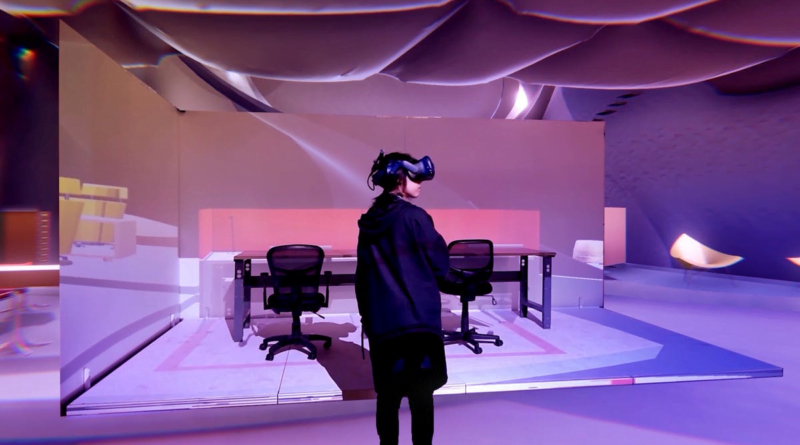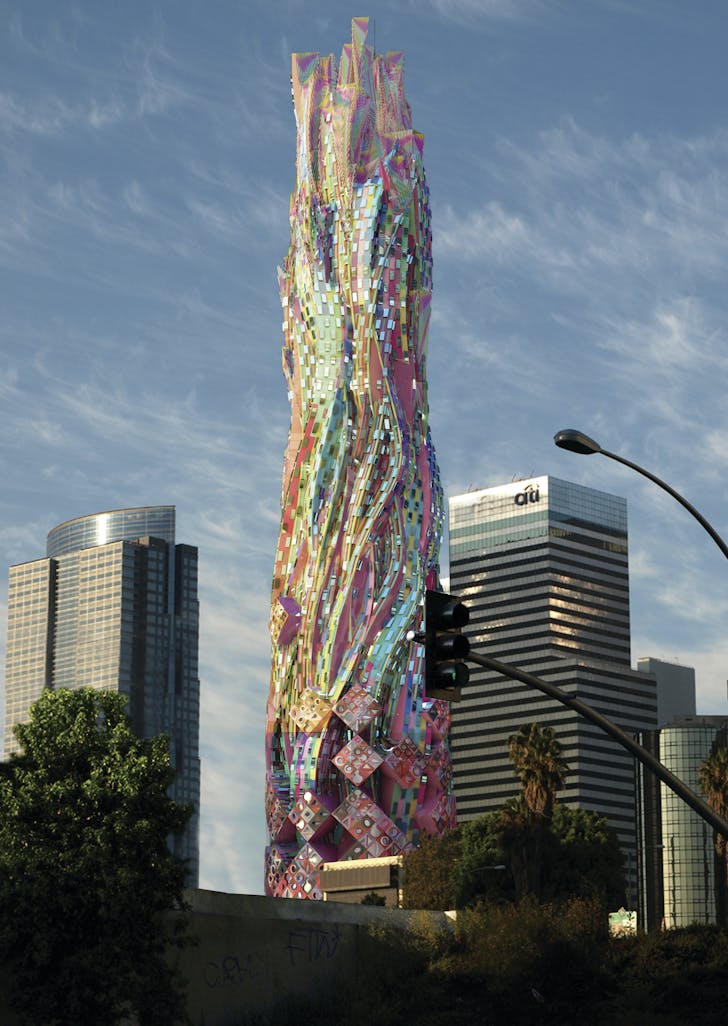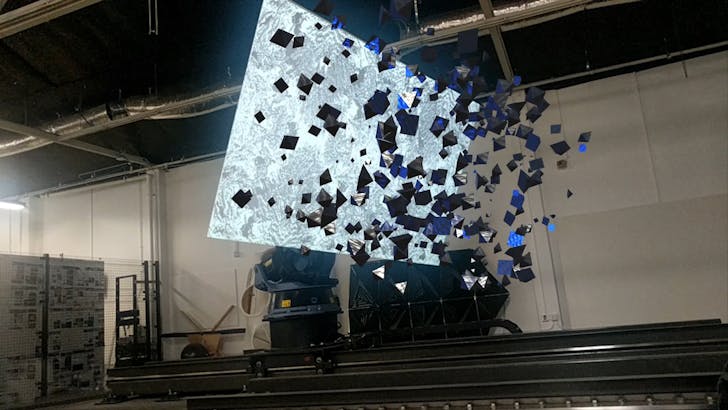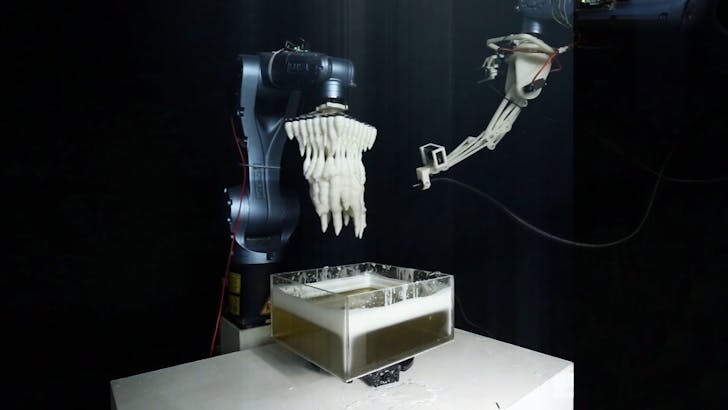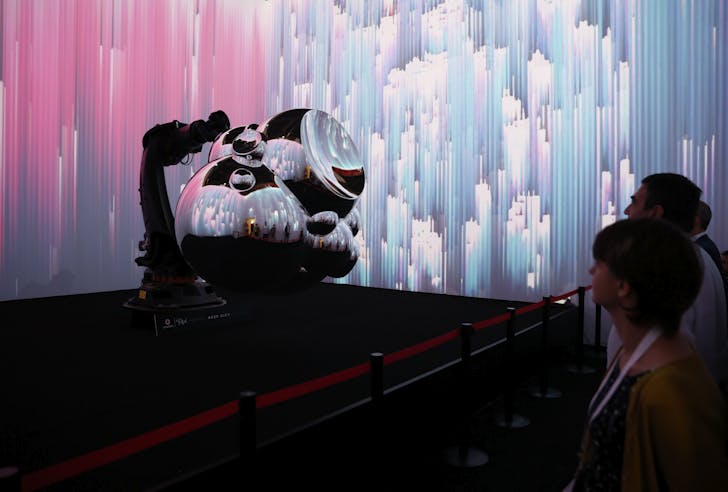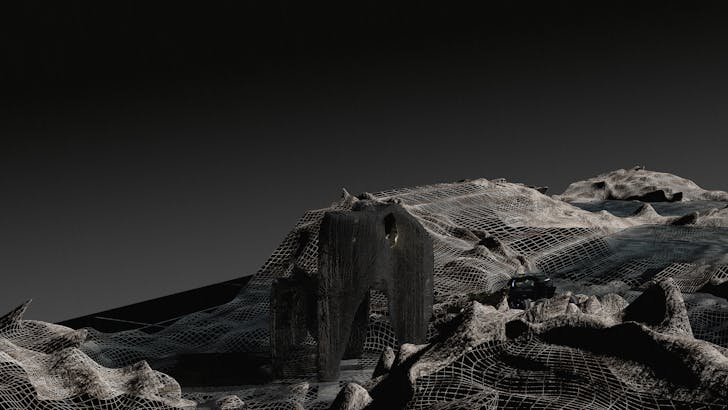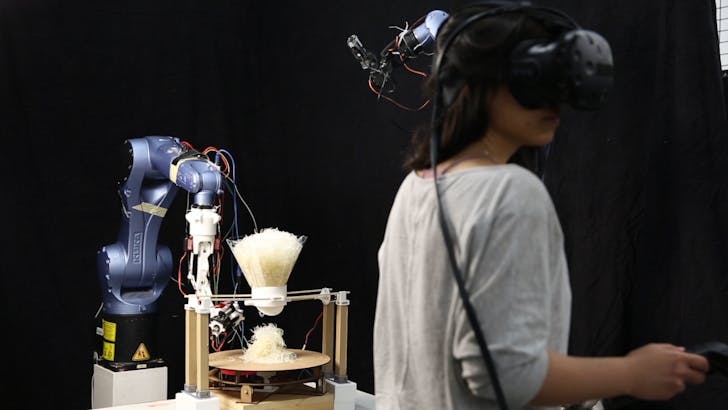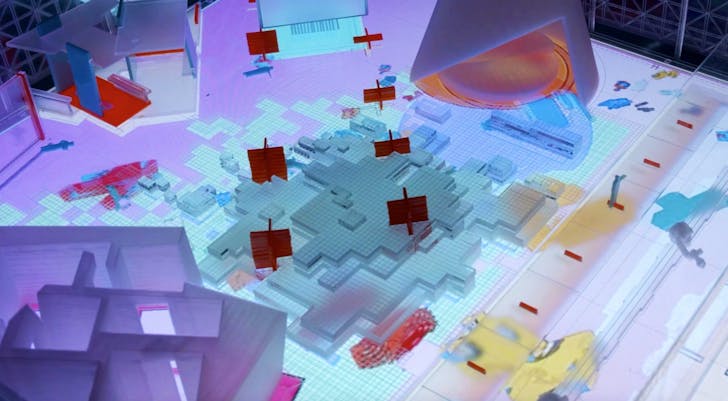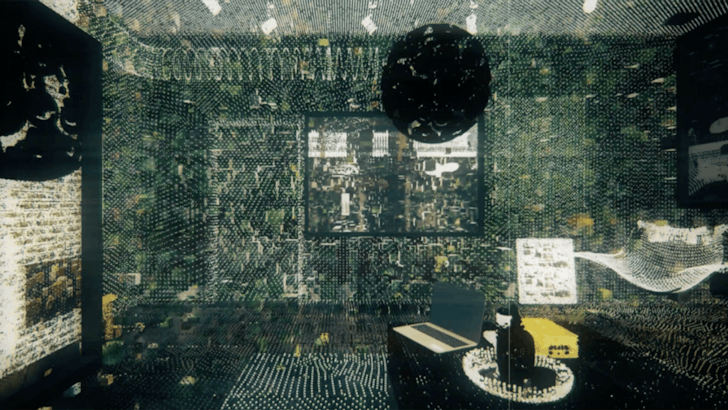Discussing Technology and ‘Architecture as Transient Media’ With Guvenc Ozel and Benjamin Ennemoser of UCLA’s IDEAS Technology Studio | Features
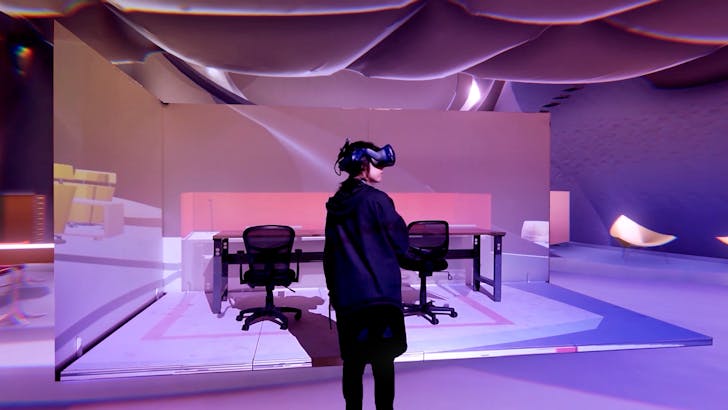
Architecture in Extended Reality (XR) – Hoacheng Dai, Yiliang Wang & Yue Di. Image courtesy of UCLA AUD
Architecture is currently at the cusp of a paradigm shift, where the environments we occupy are becoming increasingly virtual and mobile. Considered as an ecosystem of technologies rather than a tectonic assemblage of materials, architecture is shifting toward a non-static and non-physical form of experience. This opens up the potential for it to be considered as a transdisciplinary medium that merges the worlds of fabrication, gaming, and media design.
The IDEAS Technology Studio, one of four studios offered as part of UCLA Architecture and Urban Design’s Master of Science in Architecture and Urban Design (M.S.AUD) program, investigates the design of new media in digital and physical forms and its potential to radically transform the human experience. Recognized as a leading research institution UCLA Architecture and Urban Design is also a part of the UCLA School of Arts and Architecture. This unique blend and integration of departments allow both students and faculty « to connect with other forms of creative cultural production. »
In preparation for their upcoming virtual symposium, Virtual Presence: Occupying New Realities, I spoke with IDEAS Technology Studio instructors Guvenc Ozel and Benjamin Ennemoser. Together we discuss the program, its goals, and the upcoming virtual event. Ozel explains, « the goal of the symposium is to explore the notion of being present in virtual frameworks, one that re-imagines a cybernetic form of space that is fluidly responsive to crises- one that interprets architecture as transient media rather than a vessel that negotiates between the violence of nature and the body. »
Briefly describe your background in architecture and its relationship to emerging technologies and design speculation.
Guvenc Ozel (GO): My work focuses on how technology and media shape contemporary social relationships and environments. I studied sculpture, architecture, and philosophy at Bennington College and later received my Masters of Architecture degree from Yale. Multidisciplinarity and the urgency to address emerging social and aesthetic concerns of contemporary society have always been the ambition behind my work. I previously worked in the offices of Frank Gehry, Juergen Mayer, Rafael Vinoly, and others. During that early time in my career, which I consider as a continuity of my education as an architect, the primary role of technology was to facilitate and streamline the design and construction of complexity in architectural form. Currently, the role of technology in architecture relates more to the experience and operation of environments rather than the construction of them. Therefore rather than envisioning architecture built with technology, I consider the new generation of environments we occupy as technology themselves. In this regard, I consider myself as a cyber-physical architect and a critical technologist since I am primarily concerned with how we interact with architecture as a technological interface that has intelligence, agency, and the ability to transform, change and respond. That possibility for change forces us to address the larger contested role of technology in contemporary society relating to social media, privacy, and Big Data. Due to sensor technologies, GPS tracking, and location-specific digital content, the concerns of the virtual environments we occupy and socialize in are directly linked to the physical architectures we inhabit. These questions largely form the basis of the creative speculation in my work as well as the research we do at UCLA Architecture and Urban Design.
Benjamin Ennemoser (BE): I am an architect by training with a focus on computational design methods and new media. Over the last decade, I have investigated emerging technologies in order to analyze, generate and fabricate architecture at the intersection of digital and physical spaces. As a researcher, faculty, and practitioner I relate to technology primarily as a tool. But nevertheless, I am interested in how this tool can be augmented to a design process in order to challenge the way we perceive and generate the built environment in the age of Big Data. To be more specific, my work speculates on how technology garners agency in a design process and humans critically collaborate or share authorship with technology such as AI. In that sense, I am interested in how to tackle a distinct design problem through the lens of emerging technology. Simultaneously, I investigate the socio-economic, cultural, ethical, and formal consequences which are implied by integrating emerging design technologies.
Los Angeles: A Place Where Tech and Entertainment Collide

US Bank – Hoodeen Hakimian, Rui Ding, Yiliang Wang & Ying Huang. Image courtesy of UCLA AUD
After learning more about their backgrounds I was curious to hear their thoughts on the studio’s location and how the city of Los Angeles plays a role in their overall approach and methodologies when teaching architecture, technology, and emerging applications.
Ennemoser shares, « Los Angeles has, like many other cities, a vast repository of stunning and influential architecture. But what makes this city so special is, on the one hand, its unique urban fabric and on the other hand, its diverse and multidisciplinary demographic. In particular, the proximity to the entertainment industry is exciting for creative technologists who are seeking novel solutions that are driven by technological innovation. » While Los Angeles is recognized as the « heart » of film and entertainment it’s easy to forget its adjacent cities and how those places influence creativity and ingenuity within architectural spaces.
What makes this city so special is, on the one hand, its unique urban fabric and on the other hand, its diverse and multidisciplinary demographic. – Benjamin Ennemoser
Ozel adds, « Los Angeles has become the creative tech capital of the U.S. in the last decade. Its proximity to Silicon Valley and large urban environments in Asia, as well as the entertainment and tech industries really make it the perfect setting for the kind of transdisciplinary research we do at the IDEAS campus. Often it feels like we explore exactly the same questions as an industry, where we experiment with technologies such as XR and machine learning simultaneously. There is a healthy exchange between our research and industry experts from companies such as Google, Microsoft, Unity, and others. It makes it very easy that they are all here or a short flight away. »
UCLA’s IDEAS Campus: A Place for Flexible Exploration, Incubating Ideas and Robots
Last year Archinect was able to dive into two other post master’s programs held within the IDEAS Campus, the Entertainment Studio and the Urban Strategy Studio. When I asked Ozel and Ennemoser about what makes UCLA’s Master of Science in Architecture and Design programs so unique they spoke of the space itself but also what excites them about the program.
« The M.S.AUD program special is that it combines the American and European models of post-graduate architectural education in an entrepreneurial way. It allows the students to take a deep dive into a topic of their interest for the entire year-long duration of their study and really immerse themselves into the questions and experimentations they are asked to engage, » shared Ozel. » In addition, the IDEAS campus has some of the most cutting edge equipment an architecture student can have access to. Besides the typical digital fabrication facilities, we have two robotics labs that we utilize in a very unique way. They’re not hidden in the basement but out in the middle of our main space. »

It is a multidisciplinary incubator where research and practice meet, intersect and collide. The most exciting part in this setup is the exchange between faculty and students from the different studios. All four studios focus on distinct topics but share the same notion of multidisciplinarity within the field of architecture. – Benjamin Ennemoser
« It is a multidisciplinary incubator where research and practice meet, intersect and collide, » adds Ennemoser. Since the IDEAS campus houses all four post-graduate studios it provides a truly unique environment for multidisciplinary approaches to the field and its adjacent disciplines. « The most exciting part in this setup is the exchange between faculty and students from the different studios. All four studios focus on distinct topics but share the same notion of multidisciplinarity within the field of architecture. »
When it comes to resources and tools, the IDEAS campus is versatile space. Ozel shared that testing and prototyping ideas can be done at full scale. Students and faculty are able to « create mockups outdoors and bring in experts from tangential fields to have discussions and feedback. In some ways, it would be almost impossible to have a program like IDEAS anywhere outside of LA due to these factors. »
The Art of Teaching and Practicing in Architecture
While it is not uncommon for faculty members to also run their own practices outside of their institution, being able to navigate within these two realms offers beneficial insight to their students. I asked them both about their experiences as practicing architects and how this shapes their curriculum.
GO: My research at UCLA Architecture and Urban Design is fully aligned with the projects I pursue at my design practice, Ozel Office. A significant number of the projects at the office, which usually happens in the scale of installations, focus on artificial intelligence, interactive sensor systems, robotics, computational design, and virtual reality to create reactive experiences and environments that are synchronized and responsive to human presence and senses. For example, my installation Cypher, an interactive soft robotic sculpture that teleports the user to its interior through Virtual Reality, was a direct result of the aligned research in academia and practice. Google was the main sponsor of the project, and later on, we engaged their experts in machine learning in our design reviews and student research. Deep City, a robotic machine-learning installation we debuted at the Istanbul Art Fair, became the testing ground for the machine learning and robotic motion algorithms we provided to the students later. We usually perfect a particular technical workflow in a professional setting, and freely provide the students the same system to further the research at the IDEAS campus in a streamlined way.Image courtesy of UCLA AUD
BE: Both practice and academia are two interdependent factors in my work. While academia is the driver for novelty, experimentation, and fresh ideas – practice determines the constraints, needs, and opportunities to deploy research to a much bigger scale and wider audience. In this regard, practice helps me to determine how our graduates can not just be competitive in the job market but become leaders in the field.
Talking Tech and the Upcoming Virtual Presence: Occupying New Realities Symposium
Intrigued by what tools the IDEAS campus uses I asked both Ozel and Ennemoser to expand on the types of technologies and techniques used in the program. Having been to the IDEAS campus a total of three times I was familiar with what was there but wanted to understand how these tools impact student learning.
BE: In the studio, we use a multitude of tools and techniques such as AI, VR/AR, robotics, game engines, physical computing, and procedural modeling. Usually, these tools synergize in an ecosystem of technologies. Meaning in one way or another all of them are carefully composited into custom solutions and workflows that inform the technology studios’ agenda. In terms of pedagogy, this process allows us to speculate on design problems with novel and original solutions.
We were one of the first schools to start using gaming engines as a design tool in 2014. What’s unique about gaming engines is that it allows you to design “behaviors” rather than just form. Procedural and parametric design tools are mere entryways in the IDEAS Technology Studio to introduce the students to the intersection of creative coding and design. – Guvenc Ozel
GO: We were one of the first schools to start using gaming engines as a design tool in 2014. What’s unique about gaming engines is that it allows you to design “behaviors” rather than just form. Procedural and parametric design tools are mere entryways in the IDEAS Technology Studio to introduce the students to the intersection of creative coding and design. Once we cross that threshold, we primarily focus on architecture as a cyber-physical system, which covers simulations of interactive buildings, design of natively digital environments, and representations of speculative urban future narratives. Through this approach, the students are able to create photorealistic videos, VR builds, and robotic transformation schemes all through the singular tool of gaming engines. This generalist workflow provides novel design propositions in multiple scales and outputs without burdening the students with too many technical problems.
In preparation for their upcoming virtual symposium, I knew the event’s programming for showcasing student work in addition to its line up of guest panelists would be different. To gain more insight Ozel shared what to expect.
« The topic of the symposium directly relates to our studio’s research this year. As many of our students are not even in LA and we are mostly in contact through VR, we posed to them the problem of creating a virtual cocoon – a mixed reality overlay that digitally enhances the functionalities of their domestic environment. This research topic is the origin for the theme of the symposium. This has been the primary concern of not only designers and architects working with media lately but also large entertainment companies and corporations: How can we enhance the home? There is a dark side to this question, however. As the anthropogenic transformation of the natural world continues to become more contentious to human health and comfort, we are seeing ourselves progressively more reliant on the virtualization of real-world contexts for work, socialization, economy, and entertainment. As a material-centric discipline, the native stasis of architecture has traditionally been in the domain of the physical world; one that takes pride in its role as the orchestrator of permanence, continuity, and stability. »
The goal of the symposium is to explore the notion of being present in virtual frameworks, one that re-imagines a cybernetic form of space that is fluidly responsive to crises- one that interprets architecture as transient media rather than a vessel that negotiates between the violence of nature and the body. – Guvenc Ozel
« Our current reality however requires us to question such a fundamental basis of architecture and re-focus our attention to its essence; the construction of artificial environments for human occupation: digital, physical, or both. Envisioning environments enhanced by and built with media, the symposium aims to investigate scenarios where occupants of such architectures travel seamlessly between the digital and physical worlds. How can we re-imagine the home as a spatial interface that accommodates enhanced modes of human interaction and engagement? The goal of the symposium is to explore the notion of being present in virtual frameworks, one that re-imagines a cybernetic form of space that is fluidly responsive to crises- one that interprets architecture as transient media rather than a vessel that negotiates between the violence of nature and the body. »
Ozel and the studio have invited an exciting lineup of guest speakers who will be sharing and presenting their expertise within the fields of film, VR, media art, art, and technology. « We really have a fantastic multidisciplinary lineup of speakers ranging from artists to industry experts.
« Shari Frilot, the Chief Curator of Sundance Film Festival- New Frontiers, recently organized the first virtual version of Sundance with not only online screenings of accomplished films but also virtual environments that allow the creators and the film industry experts to socialize through avatars- it was really mind-blowing to see and experience. Tony Parasi, the Vice President of XR ads at Unity must have had his hands full in the last year since there has been so much interest in how Unity allows for creators to produce games, VR titles, and other digital content we all consumed exorbitantly. Aaron Koblin, a prolific media artist and co-founder of Within XR, has recently launched many VR titles including the virtual exercise platform Supernatural which has been one of the best things for me during the lockdown! And lastly, Lauren Lee McCarthy, who has over the years created some of the most poignant artworks relating to virtual presence, identity and privacy will talk about her mixed media projects spanning from full-scale installations to web interventions. All of our speakers are directly involved with finding meaning in occupying virtual worlds and what it means for contemporary society and architecture. I couldn’t be more excited about their participation in our symposium. »
Virtual Presence: Occupying New Realities Symposium will be this Saturday, February 20, 2021 from 5PM – 7PM PST. The event is free and open to the public but registration is required. To RSVP and reserve your spot click here.

